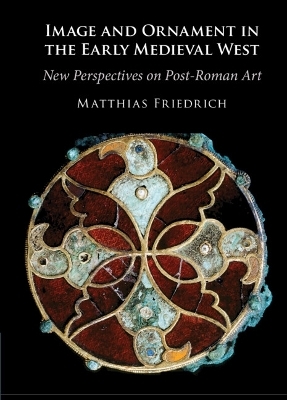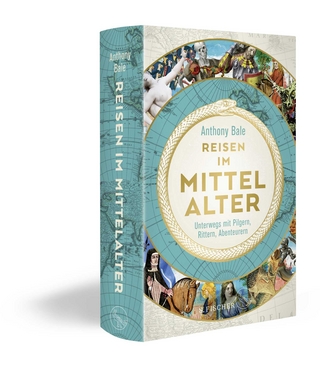
Image and Ornament in the Early Medieval West
New Perspectives on Post-Roman Art
Seiten
2023
Cambridge University Press (Verlag)
978-1-009-20777-5 (ISBN)
Cambridge University Press (Verlag)
978-1-009-20777-5 (ISBN)
This book explores early medieval visual culture of northern and central Europe. Rejecting earlier theories on the origins and meaning of early medieval art, it shows how the transformation of Roman imperial images and highly ornamental material culture produced an aesthetic that bridged various ethnic and religious identities.
Scholarship often treats the post-Roman art produced in central and north-western Europe as representative of the pagan identities of the new 'Germanic' rulers of the early medieval world. In this book, Matthias Friedrich offers a critical reevaluation of the ethnic and religious categories of art that still inform our understanding of early medieval art and archaeology. He scrutinises early medieval visual culture by combining archaeological approaches with art historical methods based on contemporary theory. Friedrich examines the transformation of Roman imperial images, together with the contemporary, highly ornamented material culture that is epitomized by 'animal art.' Through a rigorous analysis of a range of objects, he demonstrates how these pathways produced an aesthetic that promoted variety (varietas), a cross-cultural concept that bridged the various ethnic and religious identities of post-Roman Europe and the Mediterranean worlds.
Scholarship often treats the post-Roman art produced in central and north-western Europe as representative of the pagan identities of the new 'Germanic' rulers of the early medieval world. In this book, Matthias Friedrich offers a critical reevaluation of the ethnic and religious categories of art that still inform our understanding of early medieval art and archaeology. He scrutinises early medieval visual culture by combining archaeological approaches with art historical methods based on contemporary theory. Friedrich examines the transformation of Roman imperial images, together with the contemporary, highly ornamented material culture that is epitomized by 'animal art.' Through a rigorous analysis of a range of objects, he demonstrates how these pathways produced an aesthetic that promoted variety (varietas), a cross-cultural concept that bridged the various ethnic and religious identities of post-Roman Europe and the Mediterranean worlds.
A scholar of medieval archaeology and art history, Matthias Friedrich teaches in the Department of Prehistoric and Historical Archaeology at the University of Vienna. He is the author of the award-winning Archäologische Chronologie und historische Interpretation (De Gruyter, 2016) and co-editor of the interdisciplinary volume Interrogating the 'Germanic' (De Gruyter, 2021).
I. Moving Beyond Dichotomies: 1. The great divide; 2. The enduring power of images; II. New Perspectives: 3. Art, archaeology, and agency; 4. The bewilderment principle – ornament and surface.
| Erscheinungsdatum | 23.03.2023 |
|---|---|
| Zusatzinfo | Worked examples or Exercises |
| Verlagsort | Cambridge |
| Sprache | englisch |
| Maße | 183 x 260 mm |
| Gewicht | 690 g |
| Themenwelt | Kunst / Musik / Theater ► Kunstgeschichte / Kunststile |
| Geisteswissenschaften ► Archäologie | |
| Geschichte ► Allgemeine Geschichte ► Mittelalter | |
| ISBN-10 | 1-009-20777-6 / 1009207776 |
| ISBN-13 | 978-1-009-20777-5 / 9781009207775 |
| Zustand | Neuware |
| Informationen gemäß Produktsicherheitsverordnung (GPSR) | |
| Haben Sie eine Frage zum Produkt? |
Mehr entdecken
aus dem Bereich
aus dem Bereich
eine neue Geschichte des Mittelalters
Buch | Hardcover (2023)
C.H.Beck (Verlag)
38,00 €
unterwegs mit Pilgern, Rittern, Abenteurern
Buch | Hardcover (2024)
S. Fischer (Verlag)
28,00 €


